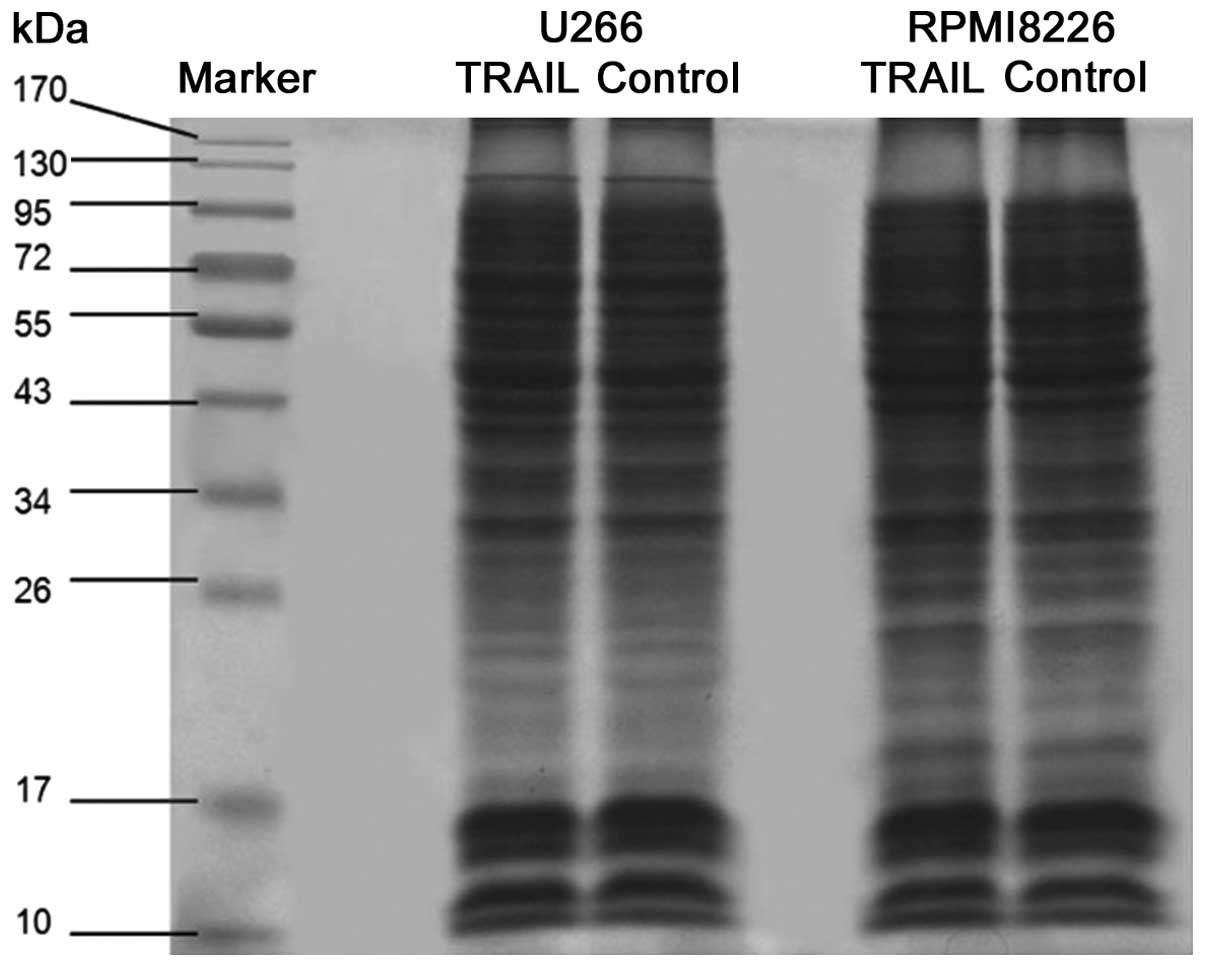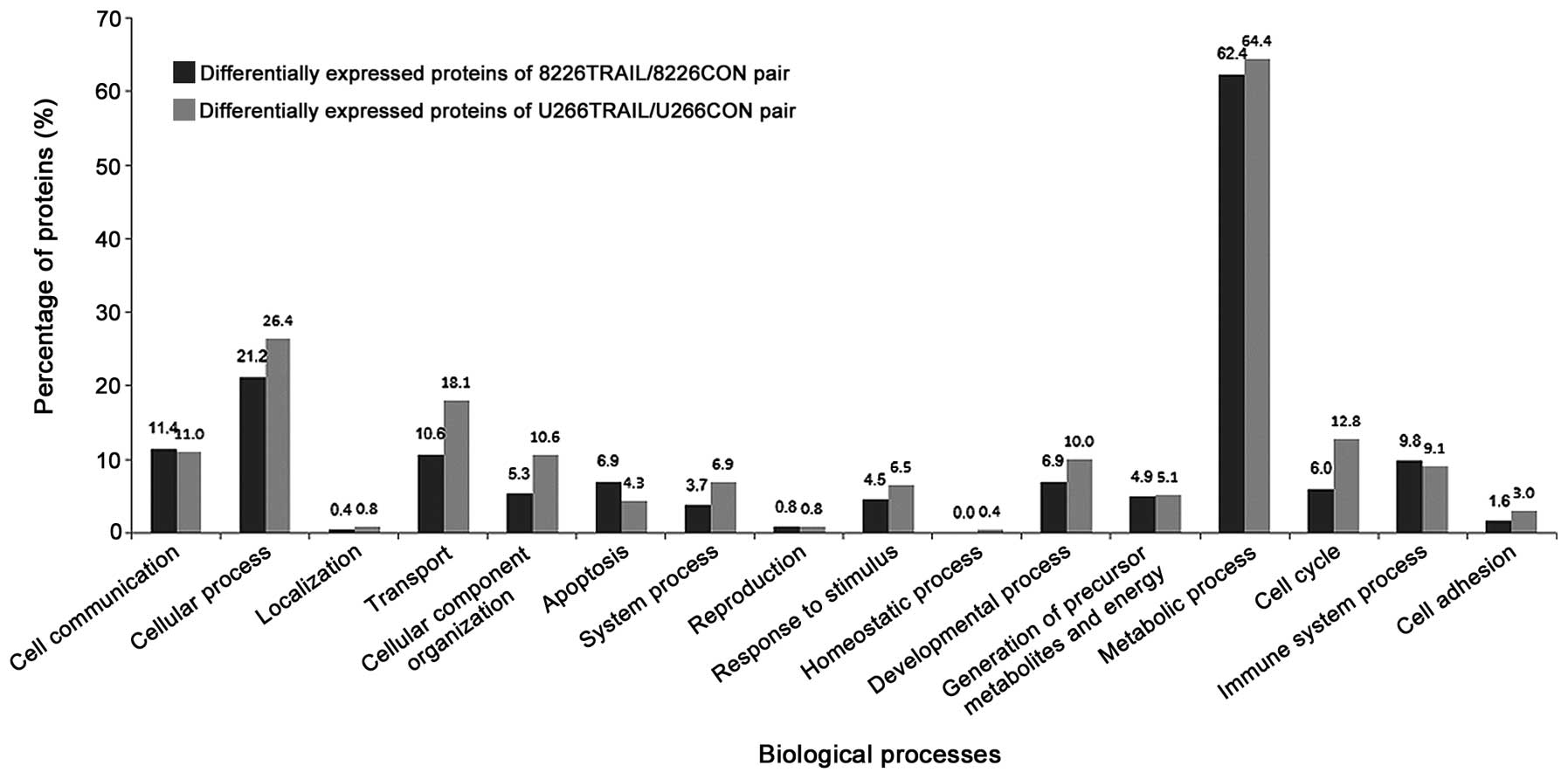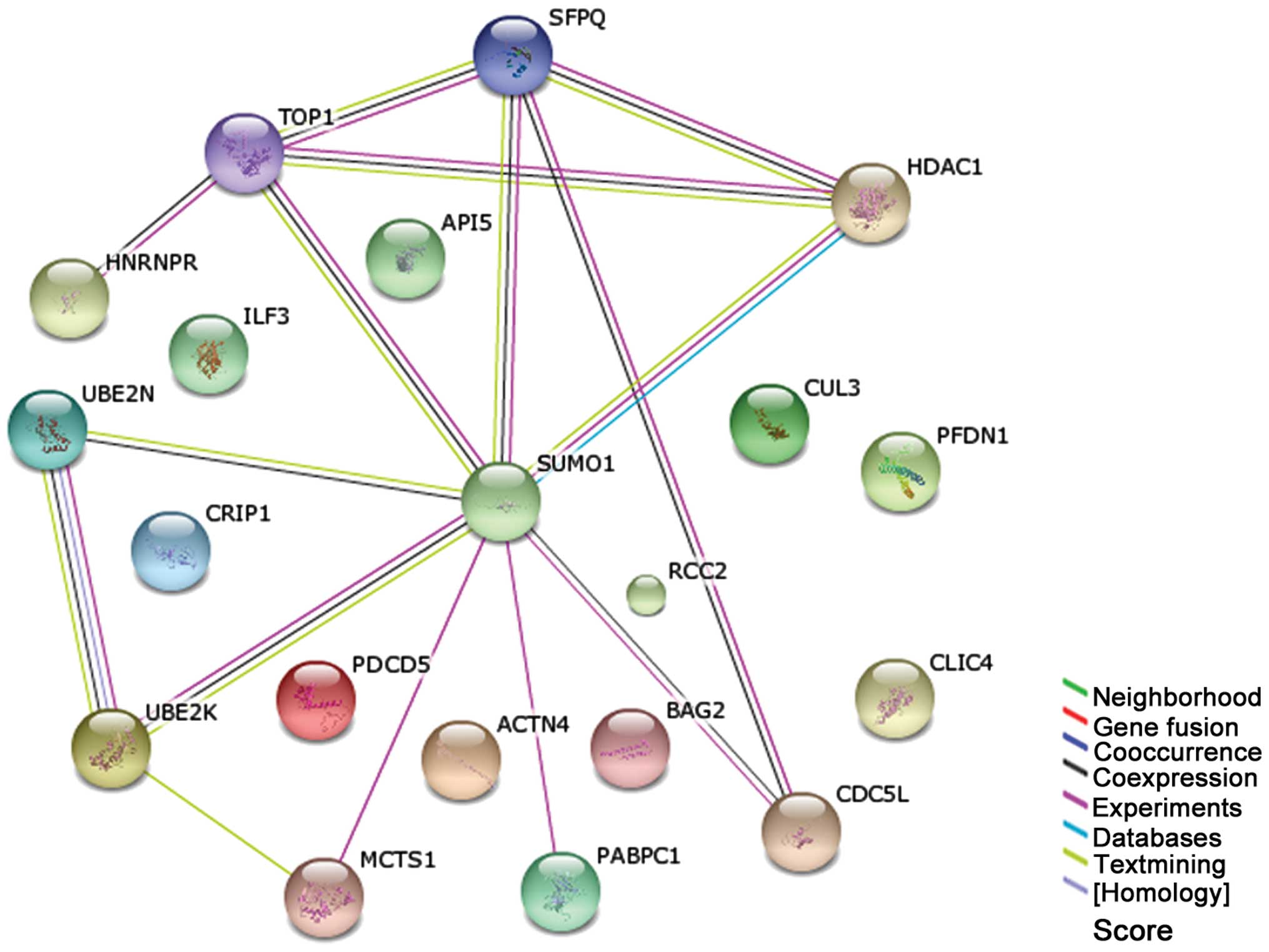|
1
|
Pratt G, Jenner M, Owen R, Snowden JA,
Ashcroft J, Yong K, Feyler S, Morgan G, Cavenagh J, Cook G, et al:
Updates to the guidelines for the diagnosis and management of
multiple myeloma. Br J Haematol. 167:131–133. 2014. View Article : Google Scholar : PubMed/NCBI
|
|
2
|
Harousseau JL, Shaughnessy J Jr and
Richardson P: Multiple myeloma. Hematology (Am Soc Hematol Educ
Program). 2004:237–256. 2004.
|
|
3
|
Gazitt Y: TRAIL is a potent inducer of
apoptosis in myeloma cells derived from multiple myeloma patients
and is not cytotoxic to hematopoietic stem cells. Leukemia.
13:1817–1824. 1999. View Article : Google Scholar : PubMed/NCBI
|
|
4
|
Geng C, Hou J, Zhao Y, Ke X, Wang Z, Qiu
L, Xi H, Wang F, Wei N, Liu Y, et al: A multicenter, open-label
phase II study of recombinant CPT (Circularly Permuted TRAIL) plus
thalidomide in patients with relapsed and refractory multiple
myeloma. Am J Hematol. 89:1037–1042. 2014. View Article : Google Scholar : PubMed/NCBI
|
|
5
|
Fang F, Wang AP and Yang SF: Antitumor
activity of a novel recombinant mutant human tumor necrosis
factor-related apoptosis-inducing ligand. Acta Pharmacol Sin.
26:1373–1381. 2005. View Article : Google Scholar : PubMed/NCBI
|
|
6
|
Pan G, O'Rourke K, Chinnaiyan AM, Gentz R,
Ebner R, Ni J and Dixit VM: The receptor for the cytotoxic ligand
TRAIL. Science. 276:111–113. 1997. View Article : Google Scholar : PubMed/NCBI
|
|
7
|
Pan G, Ni J, Yu G, Wei YF and Dixit VM:
TRUNDD, a new member of the TRAIL receptor family that antagonizes
TRAIL signalling. FEBS Lett. 424:41–45. 1998. View Article : Google Scholar : PubMed/NCBI
|
|
8
|
Marsters SA, Sheridan JP, Pitti RM, Huang
A, Skubatch M, Baldwin D, Yuan J, Gurney A, Goddard AD, Godowski P,
et al: A novel receptor for Apo2L/TRAIL contains a truncated death
domain. Curr Biol. 7:1003–1006. 1997. View Article : Google Scholar : PubMed/NCBI
|
|
9
|
Mitsiades CS, Treon SP, Mitsiades N, Shima
Y, Richardson P, Schlossman R, Hideshima T and Anderson KC:
TRAIL/Apo2L ligand selectively induces apoptosis and overcomes drug
resistance in multiple myeloma: Therapeutic applications. Blood.
98:795–804. 2001. View Article : Google Scholar : PubMed/NCBI
|
|
10
|
Gómez-Benito M, Martinez-Lorenzo MJ, Anel
A, Marzo I and Naval J: Membrane expression of DR4, DR5 and
caspase-8 levels, but not Mcl-1, determine sensitivity of human
myeloma cells to Apo2L/TRAIL. Exp Cell Res. 313:2378–2388. 2007.
View Article : Google Scholar : PubMed/NCBI
|
|
11
|
Hong D, Chen HX, Yu HQ, Wang C, Deng HT,
Lian QQ and Ge RS: Quantitative proteomic analysis of
dexamethasone-induced effects on osteoblast differentiation,
proliferation, and apoptosis in MC3T3-E1 cells using SILAC.
Osteoporos Int. 22:2175–2186. 2011. View Article : Google Scholar : PubMed/NCBI
|
|
12
|
Thomas PD, Campbell MJ, Kejariwal A, Mi H,
Karlak B, Daverman R, Diemer K, Muruganujan A and Narechania A:
PANTHER: A library of protein families and subfamilies indexed by
function. Genome Res. 13:2129–2141. 2003. View Article : Google Scholar : PubMed/NCBI
|
|
13
|
Mi H, Guo N, Kejariwal A and Thomas PD:
PANTHER version: 6 Protein sequence and function evolution data
with expanded representation of biological pathways. Nucleic Acids
Res. 35(Database): D247–D252. 2007. View Article : Google Scholar : PubMed/NCBI
|
|
14
|
von Mering C, Jensen LJ, Snel B, Hooper
SD, Krupp M, Foglierini M, Jouffre N, Huynen MA and Bork P: STRING:
Known and predicted protein-protein associations, integrated and
transferred across organisms. Nucleic Acids Res. 33:D433–D437.
2005. View Article : Google Scholar : PubMed/NCBI
|
|
15
|
von Mering C, Jensen LJ, Kuhn M, Chaffron
S, Doerks T, Krüger B, Snel B and Bork P: STRING 7 - recent
developments in the integration and prediction of protein
interactions. Nucleic Acids Res. 35(Database): D358–D362. 2007.
View Article : Google Scholar : PubMed/NCBI
|
|
16
|
Duiker EW, Mom CH, de Jong S, Willemse PH,
Gietema JA, van der Zee AG and de Vries EG: The clinical trail of
TRAIL. Eur J Cancer. 42:2233–2240. 2006. View Article : Google Scholar : PubMed/NCBI
|
|
17
|
Mellier G, Huang S, Shenoy K and Pervaiz
S: TRAILing death in cancer. Mol Aspects Med. 31:93–112. 2010.
View Article : Google Scholar : PubMed/NCBI
|
|
18
|
Adams J: Development of the proteasome
inhibitor PS-341. Oncologist. 7:9–16. 2002. View Article : Google Scholar : PubMed/NCBI
|
|
19
|
Melvin AT, Woss GS, Park JH, Waters ML and
Allbritton NL: Measuring activity in the ubiquitin-proteasome
system: From large scale discoveries to single cells analysis. Cell
Biochem Biophys. 67:75–89. 2013. View Article : Google Scholar : PubMed/NCBI
|
|
20
|
Kubiczková L, Matějíková J, Sedlaříková L,
Kryukov F, Hájek R and Sevčíková S: Proteasome inhibitors in
treatment of multiple myeloma. Klin Onkol. 26:11–18. 2013.(In
Czech). View Article : Google Scholar : PubMed/NCBI
|
|
21
|
Plowman JE: The proteomics of keratin
proteins. J Chromatogr B Analyt Technol Biomed Life Sci.
849:181–189. 2007. View Article : Google Scholar : PubMed/NCBI
|












